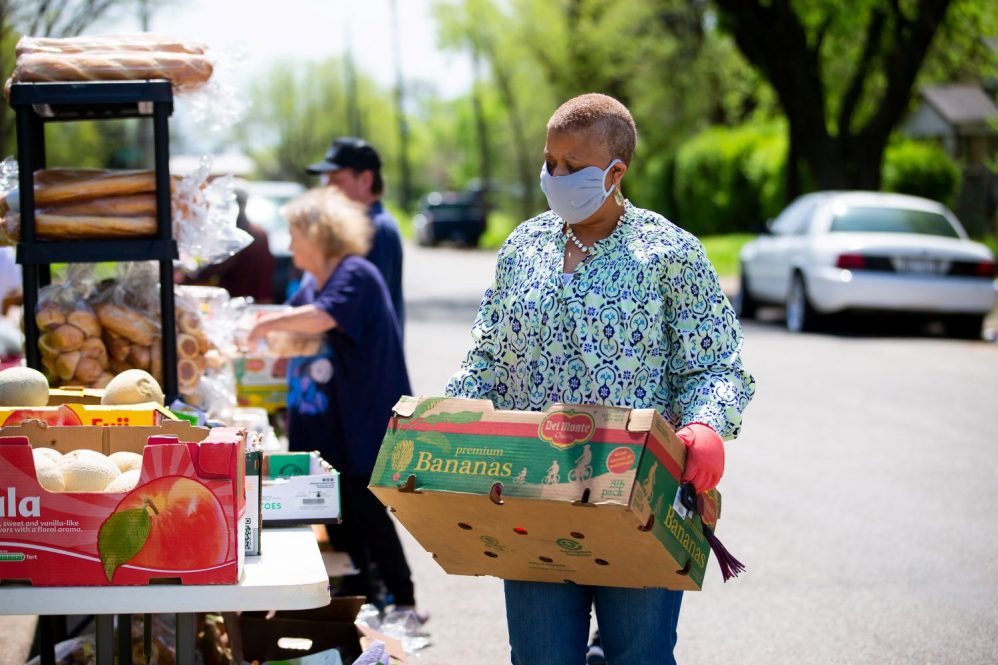During the COVID-19 pandemic, food pantries across the country pivoted to create “mobile” options, repurposing school buses or using large tractor-trailers to deliver food to different neighborhoods.
This was especially important as rates of food insecurity increased across the U.S. One group that was particularly hard-hit was lower-income families with young children.
Molly Waring, associate professor in the College of Agriculture, Health and Natural Resources, and her research team surveyed a group of mothers with young children. Along with colleague Caitlin Caspi, also an associate professor in CAHNR and researcher with the UConn Rudd Center for Food Policy and Health, Waring and her team examined mothers’ interest in and concerns about utilizing mobile food pantries.
While mobile food pantries did exist before the pandemic, disruptions to in-person services due to the COVID-19 pandemic starting in March 2020 led to a significant expansion of food pantries operating out of vehicles or other mobile setups.
The researchers conducted a survey of mothers in spring 2021, and asked respondents about their use of food pantries to better fill gaps in our understanding of how the charitable food system could best serve different populations.
“I think we have some gaps in understanding how this could best work,” Caspi says. “The norms are evolving. It’s hard to make a generalization about what these food pantries look like. What this research does is demonstrate that there’s interest in learning more.”
Waring and Caspi, who are faculty members in Department of Allied Health Sciences, worked with then-undergraduate students Alma Jeri-Wahrhaftig ’22 (CAHNR), Alexa Horkachuck ’21 (CAHNR), and Indra Kapoor ’21 (CAHNR) who are all authors on the paper in Journal of Hunger and Environmental Nutrition where they published their results.
The survey included 53 mothers from across the U.S. who had utilized food pantries either within the year before the pandemic or during it. The UConn researchers found that 60% of the mothers surveyed were “very interested” in using mobile food pantries, and another 19% were “quite a bit interested.”
The main advantage of these mobile pantries is that they come right to clients’ neighborhoods, or even their homes in some cases.
“The idea that something would come to your neighborhood was very appealing to a majority of moms,” Waring says.
Some of the most common concerns surrounded issues of cleanliness, food safety, and the quantity and variety of healthy food options available.
“Many of those would be concerns in a brick-and-mortar food pantry as well,” Waring says.
There is very little data about mobile food pantries during the pandemic, given that in many cases, these mobile operations were temporary responses to disruptions caused by the pandemic. Further, the charitable food system is understudied in general compared with government-sponsored food security programs such as the Supplemental Nutrition Assistance Program (SNAP).
One of the largest gaps in understanding mobile food pantries is knowledge of what kind of food they distribute. Previous research shows that food pantry clients value access to fresh fruits and vegetables and other healthy food staples.
“Understanding their needs and challenges is important to make sure we’re addressing food insecurity for families with children,” Waring says.
While this study focused on families with young children, different populations have different needs and concerns yet to be explored.
This work is just one piece of the puzzle of understanding how to improve the charitable food system, especially as conversations about food insecurity in the U.S. have become more prominent in light of the challenges COVID-19 exposed.
“There are some great conversations happening now about what we want the system to look like given that the need isn’t going away any time soon,” Caspi says.
Follow UConn CAHNR on social media



